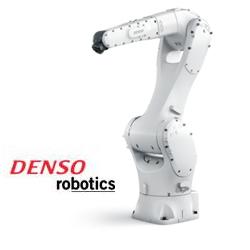Impact of COVID-19 on Workflow Automation Market
Global Workflow Automation Market is growing at a stellar pace in recent times,business sector has undergone grass root level changes, and has embraced new technologies Processes that can expedite the growth of businesses are readily adopted across industrial frameworks.
The global workflow automation market is growing at a stellar pace in recent times. The business sector has undergone grassroot-level changes, and has embraced new technologies. Processes that can expedite the growth of businesses are readily adopted across industrial frameworks. There is a stellar need for improved workflows and functionalities across businesses, and industry leaders are earnest about accomplishing this requirement. The past decade has been resplendent with the development of improved technologies based on automation, artificial intelligence, and machine learning. In this scenario of rapid technological disruptions, the business sector is also looking to overhaul its operational dynamics. Therefore, the global workflow automation market is expected to attract increased revenues in the years to follow.
A report on the global workflow automation market by Transparency Market Research (TMR) uncovers several factors related to market growth. The global workflow automation market can be segmented on the basis of end-use, application, and region. Based on end-use, the demand for workflow automation in business functionalities has been tremendous. The indispensability of workflows within all organized businesses can be quoted as a key reason behind this trend.
Charlie AI, a Vancouver-based start-up, has recently launched its homegrown product for workflow automation. The company announced the limited release of its new product that is meant to automate workflows across the financial domain of businesses. The start-up has successfully developed a solution that can expedite tasks related to scheduling, customer communications, and invoicing. The intent behind the product is to expedite processes that may otherwise consume excessive time.
Asana, a renowned work management vendor, has also entered into the workflow automation market. The company has added a range of new automation features to its existing solutions. It has ventured into the area of digitizing text from images, and this is a key development for the company.
Global Workflow Automation Market: Growth Drivers
Integration of Automation Technologies
The growth of an organization is enshrined in its ability to increase the efficiency of its people and resources. Integration of automation technologies in automation offers wider scope for improvisation within businesses. This integration also facilitates faster deployment of business functionalities and more efficient execution of tasks. Therefore, the use of workflow automation across global organizations has become an undelayable feat. It is also safe to assert that the use of workflow automation has improved the overall efficiency of several industries. The design and execution of processes within an enclosed setup depends on the nature of operations the setup caters to. Therefore, workflow automation comes into play right at the inception of a setup.
Need for Faster Retrieval Time
The global workflow automation market has amassed a large volume of revenues from the commercial sector. The need for standardization, quick communication, and faster retrieval time across this sector has paved way for the integration of workflow automation. Furthermore, the importance of data management and information sharing within organizations has shifted the focus towards automation technologies. The use of workflow automation helps in minimizing the scope of error in data storage and retrieval. Besides, workflow automation can be integrated in accordance to the pre-defined rules of a business or organization.
Featured Product

